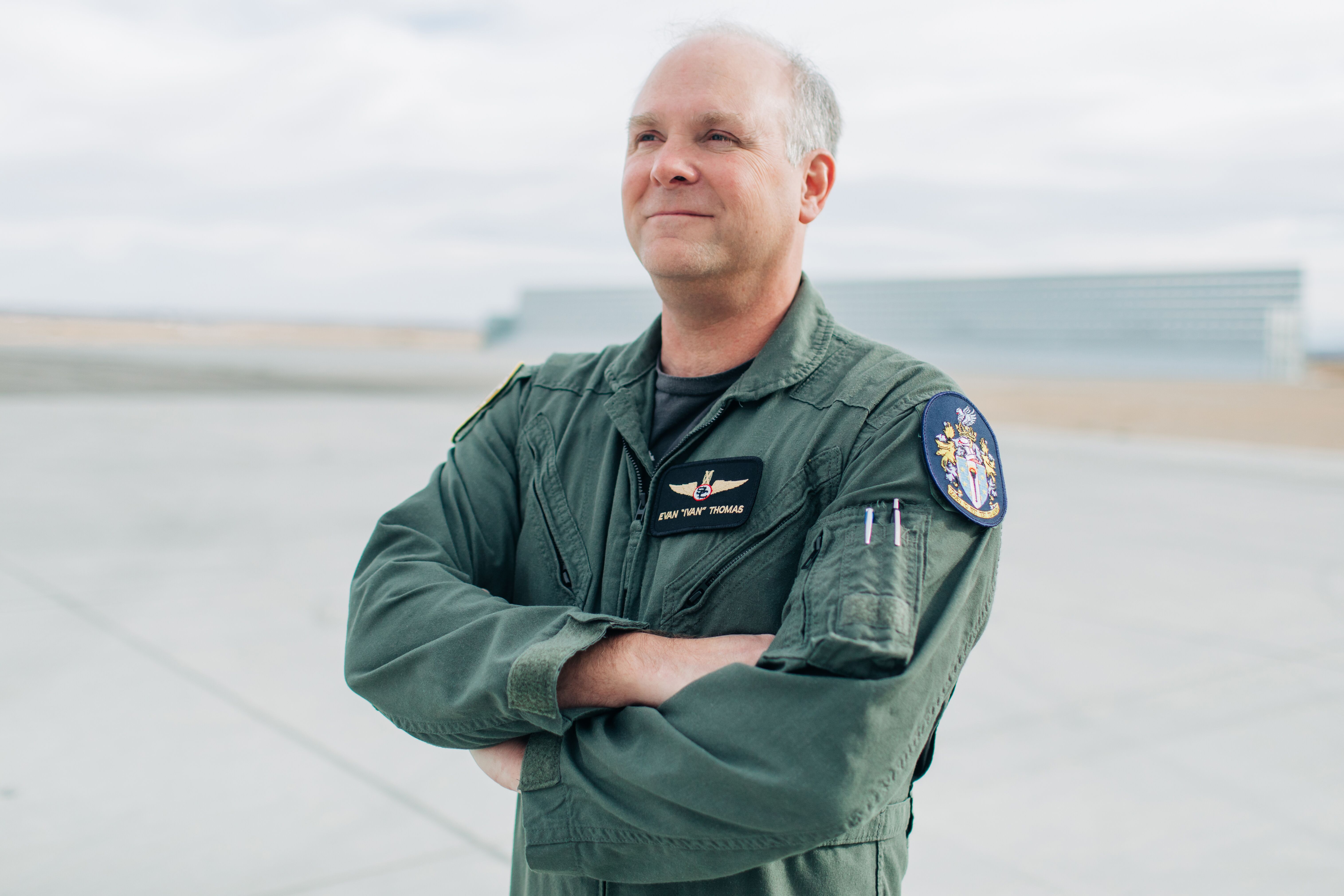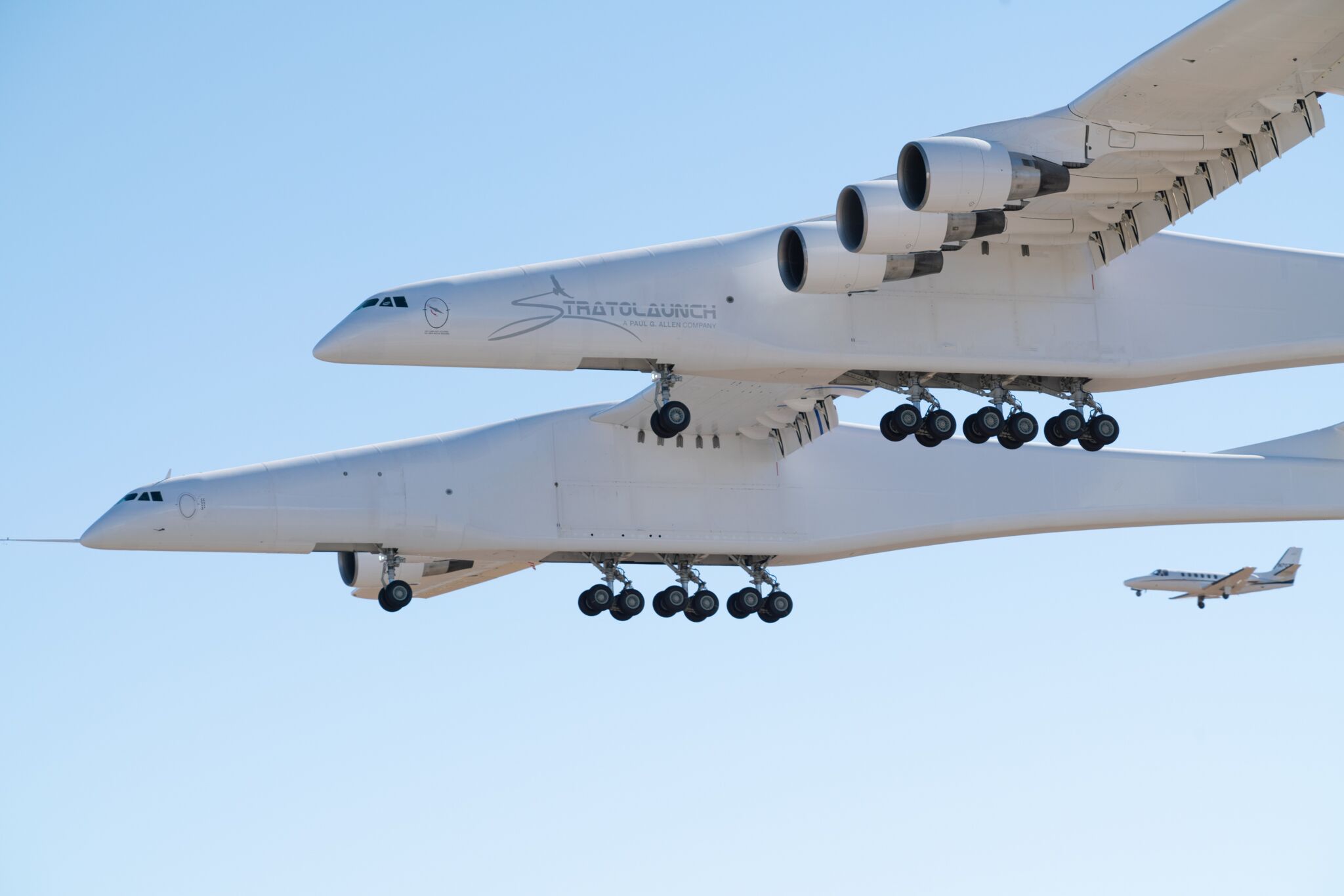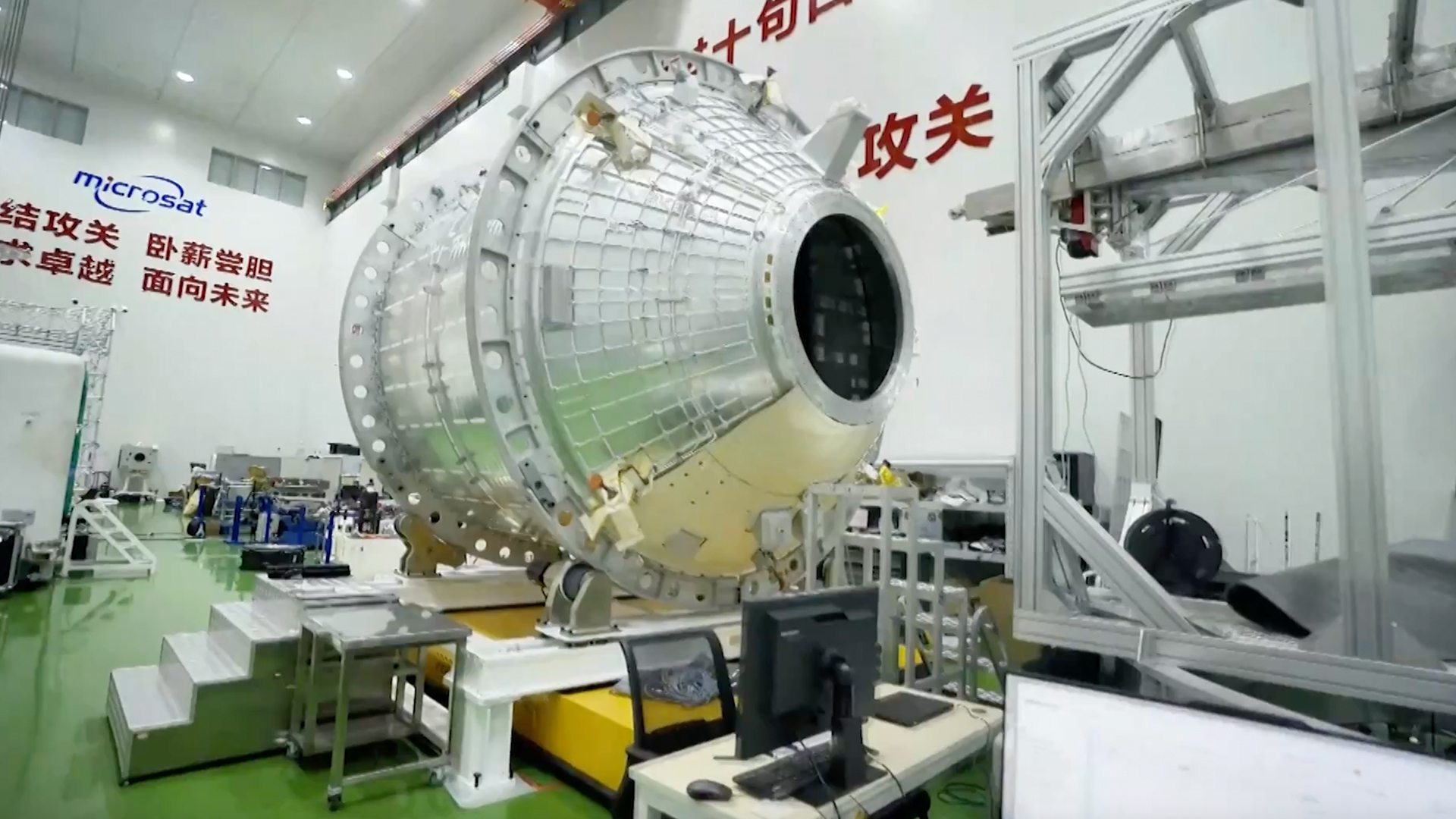What It Was Like to Fly the 'Roc' — Stratolaunch's Massive Rocket-Carrier Airplane

The pilot behind Stratolaunch's first flight of the world's largest plane on April 13 said the complex all-composite aircraft ran like clockwork through the 2.5-hour flight, a first for this kind of aircraft.
The plane — nicknamed Roc — made its unannounced flight from the Mojave Air and Space Port in California. It's the same location where the company has done runway tests for several months. Stratolaunch's plane is designed to launch rockets from the air.
"The flight itself was smooth, which is exactly what you want the first flight to be. And for the most part, the airplane flew as predicted, which is again exactly what we want," pilot Evan Thomas, who was at the controls of the aircraft as it soared to altitudes exceeding 17,000 feet (nearly 5,200 meters), said in a news conference on the same day as the flight.
Related: Stratolaunch Test Photos: The World's Largest Plane in Action
He said that he was used to how the plane handled during high-speed taxis on the ground, but what made it different was starting to take off — a moment that Thomas described as, "OK, it's time to go."
The flight team tested the rocket-carrier airplane for speed calibration and flight control, and also performed simulated landing approaches at 15,000 feet (nearly 4,600 meters) of altitude. "We saw a few little things that were off nominal, but really for a first flight, it was spot-on," Thomas said. He described the systems on the airplane as similar to running like a watch; although the propulsion, hydraulics and other systems are complex, they "all ran perfectly, which is great."
After several simulated approaches to the runway, Thomas lined up the landing. "[I] saw that plenty of folks had come out today to watch us land, and went for the landing," he recalled.
Breaking space news, the latest updates on rocket launches, skywatching events and more!
"Then we came in, touching down pretty much where we wanted to, on speed," he said. "The airplane felt really nice on the touchdown, gear felt good. We had a couple of corrections to line up in the slow-down, and ended up rolling to a stop pretty much where we wanted to, coming off the runway. So it was overall fantastic."
A video of the takeoff shows the 385-foot (117-meter) wingspanned vehicle elegantly taking to the air with its six jet engines. Crowds take in the view as it circles and lands safely. Once the flight crew emerges, ground personnel playfully spray them with what appears to be water, stuffed into compressed air canisters.
Stratolaunch's first successful flight of this plane happened eight years after the company was founded by Paul Allen, the Microsoft co-founder who backed and shepherded Stratolaunch until his death from cancer in 2018. The plane was built by Scaled Composites, the same Mojave aerospace company that also built SpaceShipOne — the first commercial suborbital spacecraft.
"It was an emotional moment for me to personally watch this majestic bird take flight, and to see Paul Allen's dream come to life in front of my very eyes," Stratolaunch CEO Jean Floyd said at the news conference. "I had imagined this moment for years, but I'd never imagined the experience without Paul standing next to me. And even though he wasn't there today, as the plane lifted gracefully from the runway, I did whisper a 'thank you' to Paul for allowing me to be a part of this remarkable achievement."
- Stratolaunch's Rocket Carrier, the Biggest Airplane Ever Built, Aces Fastest Runway Test Yet
- Paul G. Allen, Billionaire Stratolaunch Founder Who Pushed for Private Space Travel, Dies at 65
- Space Calendar: Launches, Sky Events & More
Follow Elizabeth Howell on Twitter @howellspace. Follow us on Twitter @Spacedotcom and on Facebook.

Elizabeth Howell (she/her), Ph.D., was a staff writer in the spaceflight channel between 2022 and 2024 specializing in Canadian space news. She was contributing writer for Space.com for 10 years from 2012 to 2024. Elizabeth's reporting includes multiple exclusives with the White House, leading world coverage about a lost-and-found space tomato on the International Space Station, witnessing five human spaceflight launches on two continents, flying parabolic, working inside a spacesuit, and participating in a simulated Mars mission. Her latest book, "Why Am I Taller?" (ECW Press, 2022) is co-written with astronaut Dave Williams.


